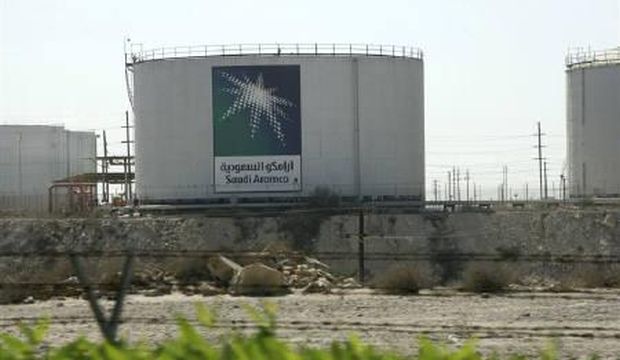
This file photo shows oil tanks at the Saudi Aramco headquarters during a media tour at Damam city, Saudi Arabia, on November 11, 2007. (Reuters/Ali Jareki/Files)
Al-Khobar, Asharq Al-Awsat—The opening of two new oil refineries in Saudi Arabia will help the Kingdom maintain and grow its share of the global crude and petroleum products markets, sector experts have told Asharq Al-Awsat.
The SATORP Jubail Export Refinery, owned by Saudi Aramco Total Refining and Petrochemical Company (SATORP)—a joint venture between the Kingdom’s state-owned oil company Saudi Aramco and global oil and gas giant Total—began refining operations on August 1, according to Total’s head of refining and chemicals, Patrick Pouyanné, who was speaking to the Reuters news agency on the sidelines of the European Refining Conference in Brussels on Tuesday.
The Yanbu Aramco Sinopec Refining (Yasref) project, a joint project between Saudi Aramco and Chinese oil and gas producer Sinopec, began initial test runs earlier this month, according to Saudi Aramco’s chief executive, Khalid Al-Falih, who was speaking at a conference in Tianjin in China last week.
Both refineries will convert up to 400,000 barrels per day (bpd) of 100-percent Arabian Heavy Crude to lighter petroleum-based products, with the Yasref refinery turning out gasoline, diesel and liquefied petroleum gas (LPG), and SATORP producing diesel and jet fuel.
A informed source, who requested anonymity because he was not authorized to brief the media, told Asharq Al-Awsat that once both refineries were fully operational, the Kingdom should expect to “export larger amounts of refined petroleum products, which would give it much more weight in . . . [this] market and not just the crude oil market.”
Official figures obtained by Asharq Al-Awsat show that refining activity in the Kingdom jumped to 1.95 million bpd on average during the first half of 2014, up from 1.54 million bpd during the same period last year. Figures for August and September are as yet unavailable.
Experts said they expect both refineries together with the Ruwais refinery due to open in the UAE early next year to altogether produce an additional 1 million bpd of refined petroleum products coming from the Middle East, particularly diesel.
Refined products from SATORP began exporting at the end of last year, while output from Yasref is expected to hit export markets by the end of this year.
Less than 6 percent of SATORP exports will reach European markets, however, according to an official from Total, who also said most of the output would be exported to Asia, east Africa and other parts of the Middle East.
This comes as Saudi oil exports declined recently on the back of reduced demand for crude from the US and declining profit margins from refined Arabian Light Crude in Asian markets. However, observers predict an uptick in exports due to the large discounts being offered by Saudi Aramco to buyers during September and October.
Observers are also watching the Saudi market closely after global oil prices fell below 100 US dollars per barrel for the first time in over a year earlier this month, worried that a possible rise in production from the world’s leading oil producer could push prices further down. But OPEC figures showed Saudi oil production had decreased in August by around 400,000 bpd from its daily output of 10.01 million bpd in July, with most analysts putting this down to reduced demand for exports rather than the annual dip in domestic demand following the end of the summer season.
OPEC countries, which in addition to Saudi Arabia also include Libya, Iraq, Qatar, the UAE, Iran, Venezuela and Angola, together produce around 30.3 million bpd of crude, but it is expected, following comments made last week by the group’s secretary-general that this will be lowered in the fourth quarter of the year by around 500,000 bpd in order to avoid building up a surplus and pushing prices further down and away from the critical 100 dollar per barrel mark which OPEC countries rely on oil prices staying above in order to regulate their budgets.
